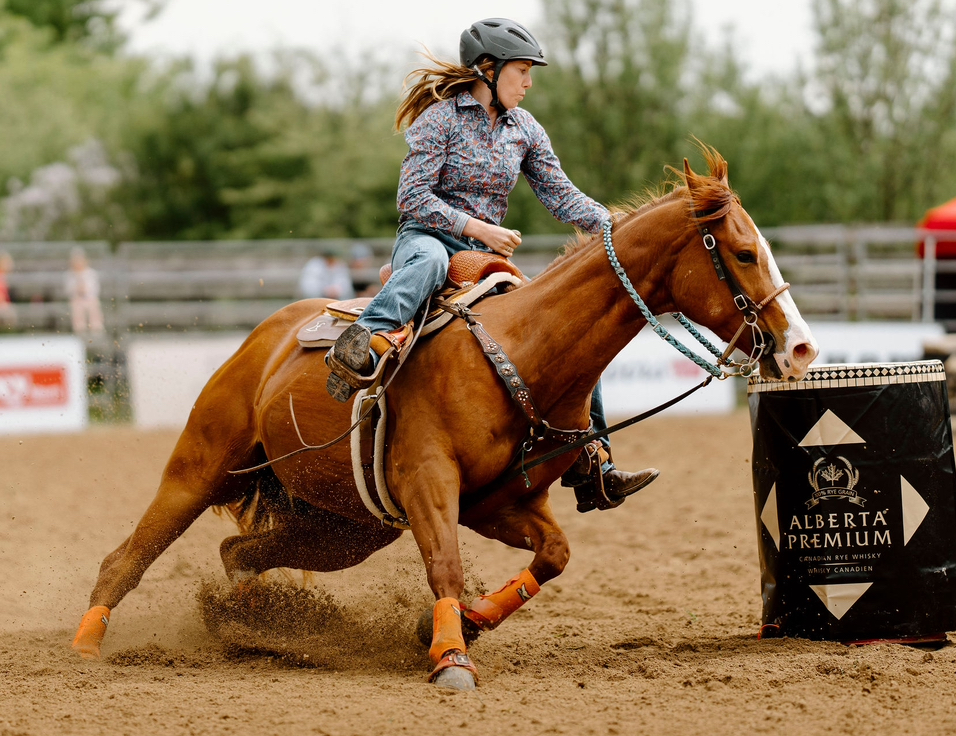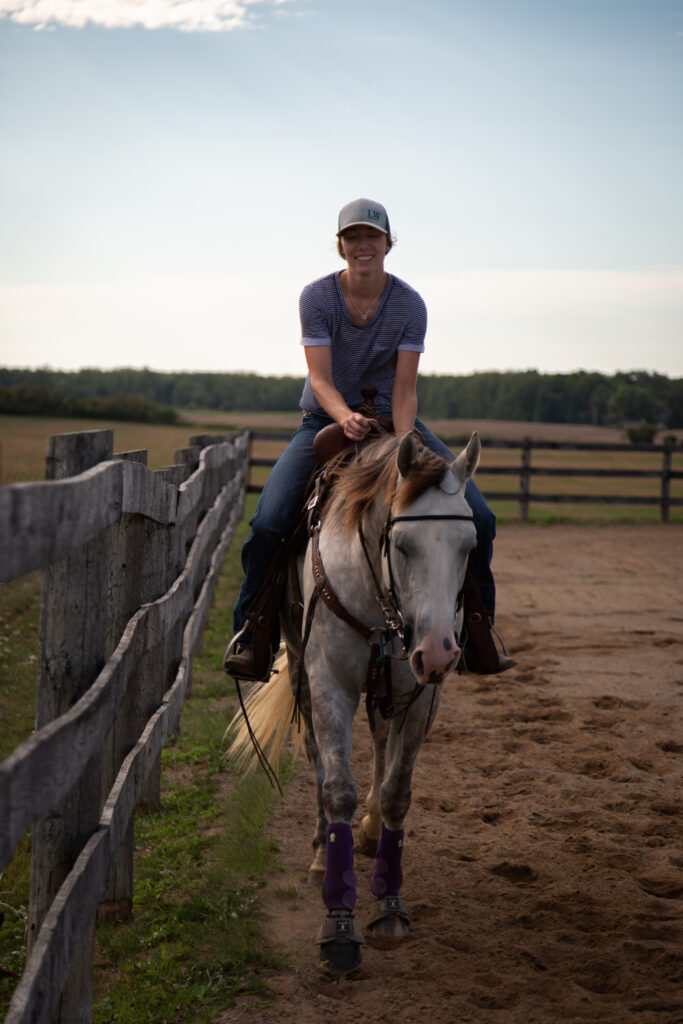
The Best Sport Medicine Splint Boots For Barrel Racing
The Best Barrel Racing Leg Protection
When it comes to barrel racing, choosing the right leg protection for your horse can be overwhelming but also very important. Getting started in barrel racing itself can be daunting, something I help with here in the guide to barrel racing The right splint boots not only protect the legs from potential injuries but also offers support. There are many to choose from with new brand poping up all the time. hey all in essence do the same thing, but which is best for your horse, and also you.
We will compare some of the top splint boots, some that I have personally tried and some I still use today; Including the Classic Equine Legacy2 Support Boots, Professional’s Choice 2XCool Sports Medicine Boots, Tough 1 Extreme Vented Sport Boots, and Weaver Prodigy Athletic Boots.

Splint boots offer essential support to the tendons and ligaments, in barrel racing we know it is a high demanding sport. The right boots will help from the legs from getting too hot and full of dirt that can cause discomfort and potentially further issues.
Let’s gear up with the best splint boots and make every run the best it can be.
Classic Equine Legacy2 Support Boots
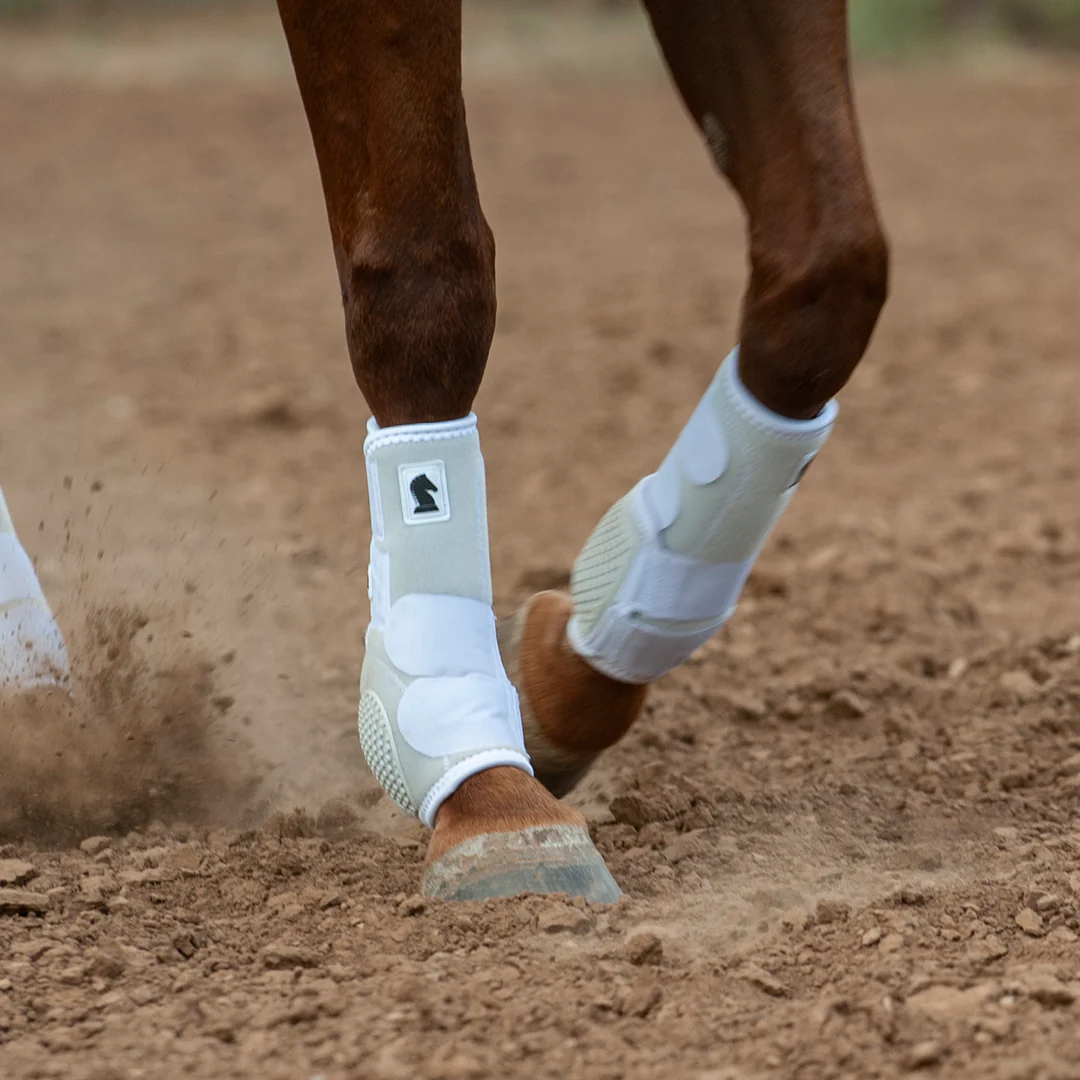

If you go to a race you will see lots of Classic Equine Legacy2 fronts and the newer release of the Flexion Legacy2(pictured above) for good reason. They are made from 100% virgin neoprene, these boots are easy to use and countour around your horses legs really nicely.
For those riders who are really particular about fit, the inner rib is a game-changer. Positioned between the tendon and the cannon bone, this rib ensures the boots maintain perfect alignment, ahh yes, we love that for you!
The Classic Equine Legacy2 Support Boots or any of their Legacy line boots are a good choice for any level barrel racer. They fit great, are easy to put on and just look good!
Professional’s Choice 2XCool Sports Medicine Boots
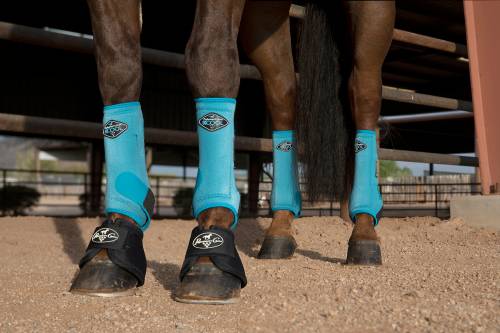

If breathability are high on your checklist, then the Professional’s Choice 2XCool Sports Medicine Boots are for you. Ditching the traditional neoprene, these boots are made from ultra-lightweight, super-breathable materials that make them different in the world of barrel racing.
But, also beware, I did hear that the material isn’t as protective as neoprene due to the mini air pockets that allows them to be more breathable. Overall, Professional Choice does have quality porducts and you can’t go wrong with this choice.
Tough 1 Extreme Sport Boots
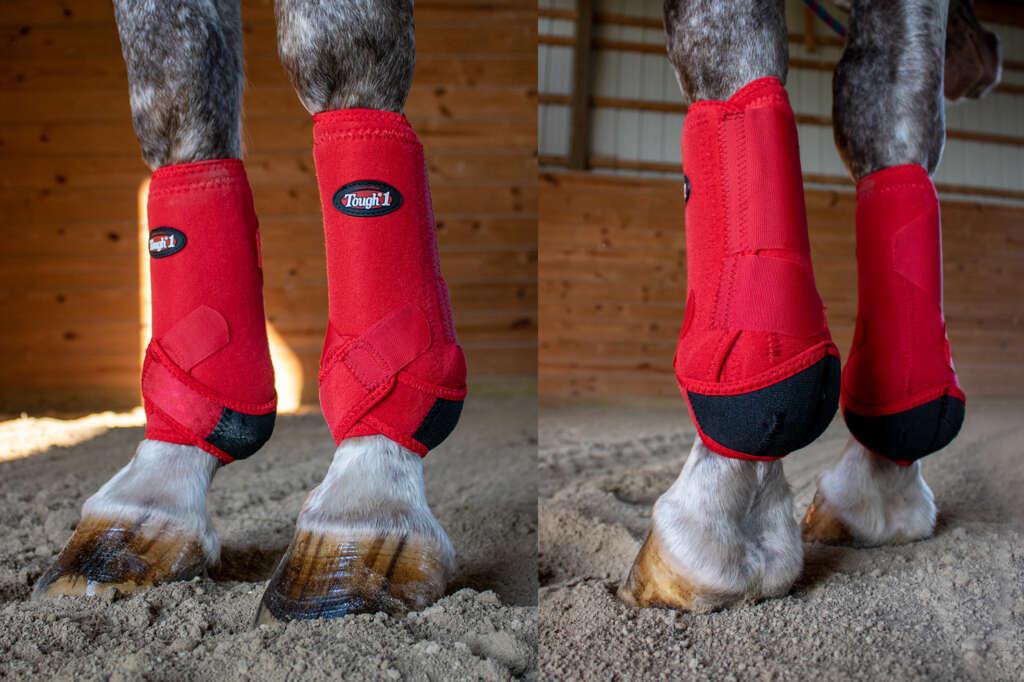
These boots are designed to give your horse full support with the suspensory sling, which offers flexible support to the fetlock and tendons. Plus they look cool!
The boots also come with nicely places velcro that help them shape perfectly to your horse’s legs. Keeping out dirt and debris which is always a treat for the horse.
In a nutshell, if you’re after a pair of boots that offer good protection, cost effecient and a fit that feels custom-made, the Tough 1 Extreme Vented Sport Boots are definitely worth trying out.
Weaver Prodigy Athletic Boots
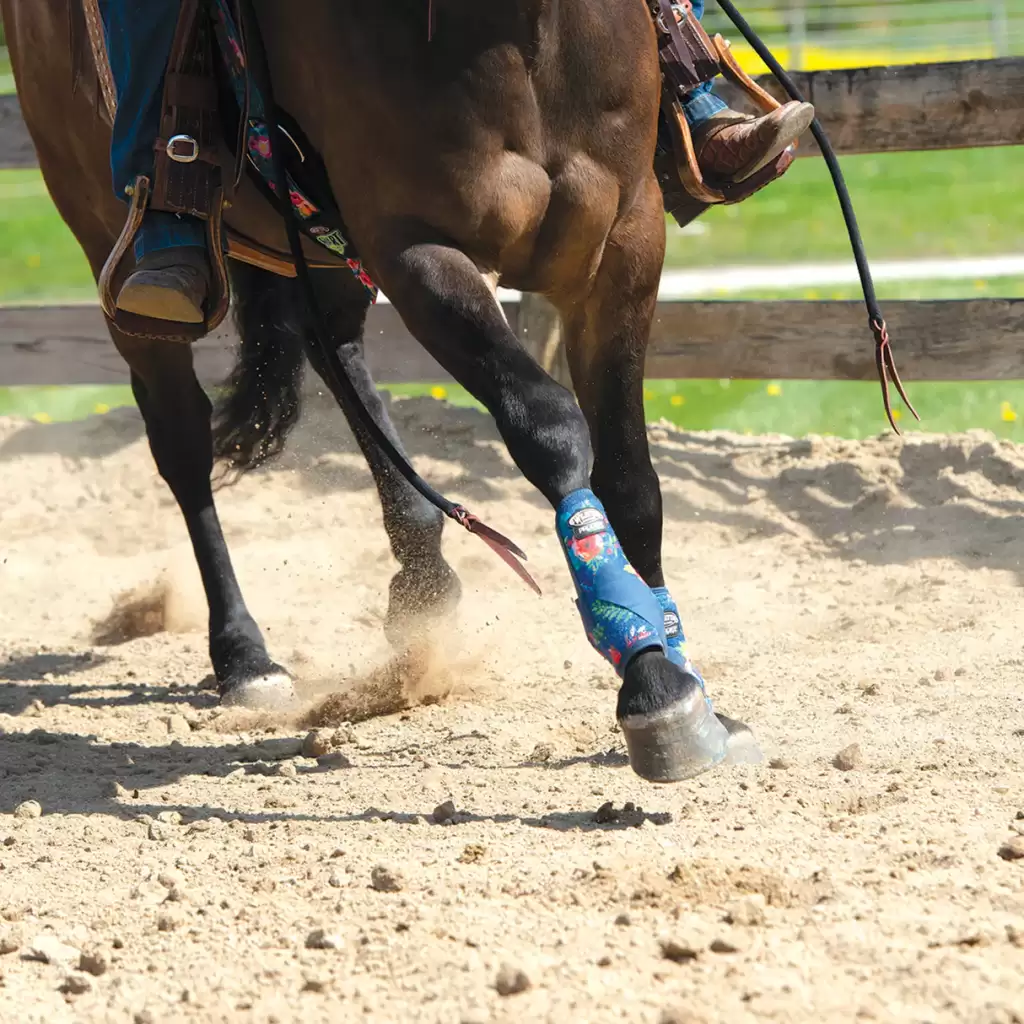
These boots are designed to offer support and protection with their innovative Dynamic Sling System, which cradles your horse’s suspensory tendons and ligaments like a well-fitted glove (they say).
The combination of a neoprene liner and stretchy binding creates a snug fit that feels almost custom-made for your horse’s legs.
I have not personally used them but these boots have been tested and fine-tuned by a variety of industry professionals. If its good for them it must be good for us, right?
They’re easy to put on, and provide your horse with the freedom to move naturally. The Weaver Prodigy Athletic Boots are worth a shot!
How to Choose the Best Splint Boots for Your Horse
There are so many option out there. Econoclast, relentless, Tacktical, and many more smaller brands that I will share below.
Evaluate your horse’s specific needs. Are they prone to injuries, or do they need extra support? Do you just want to look good with funky paterns and colours?
Breathability is another thing to consider. You don’t want your horse to work with hot legs as it can cause injury. A lot of boots get hot naturally so it’s important to take those bad boys off your horses leg as much as possible. This means after your runs too, take them off. This also included the overreach boots too!
Other Choices Good Choices
There are lots of high end leg wrap options out there. Here are a few others you can choose from.
Iconoclast

Josh Andrews Dura Boots (would like to try these)

Tacktical Leg Wraps

Polo Wraps
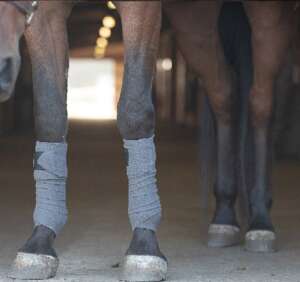
Then of course there are polo wraps. Some use them on all four legs, some use them only in the hind legs, some say they dont offer enough protection. They are less convenient then the splint boots as they need to be cleaned and rolled up before each use.
They are also better suited for the more advanced as you can mess up applying polo wraps quite easily. (But, if you want to learn, there will be a blog and video showing you how to properly put them on soon)When it comes to our horses precious legs and tendons, we really want to get things right! Having said that, polo wraps have a place, but my opinion is id say stick with more protection and convenience alone, these do not get my vote for barrel racing.
Explore the many options out there, you will find the ones that work for you and your horse.
Let us know below which ones you have tried which ones you like in the comment section below.


